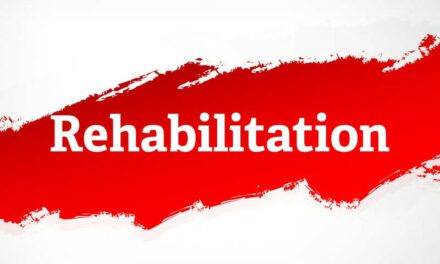Researchers at the University of East Anglia have created a new gaming platform designed to use low-cost video game technology to improve the lives of stroke patients experiencing complex neurological syndromes caused by their stroke.
It is hoped that this type of technology, which can be used in patients’ own homes, could prove particularly beneficial for rehabilitation during periods of lockdown, social distancing and shielding – caused by the Covid-19 pandemic.
Their study, published in Neuropsychological Rehabilitation, explores the usability of virtual reality games for helping stroke patients recover from this condition, according to a media release from University of East Anglia.
“A stroke can damage the brain, so that it no longer receives information about the space around one side of the world. If this happens, people may not be aware of anything on one side, usually the same side they also lost their movement. This is called hemispatial neglect.
“These people tend to have very poor recovery and are left with long-term disability. Current rehabilitation treatments involve different types of visual and physical coordination tasks and cognitive exercises – many of which are paper and pen based.
“We have pioneered new non-immersive VR technology which updates these paper and pen tasks for the digital age – using videogame technology instead.”
— Lead researcher Dr Stephanie Rossit, from UEA’s School of Psychology
How User-Friendly Are They?
The team tested out three new games on stroke survivors, their carers and stroke clinicians (including an occupational therapist, healthcare assistant, physiotherapist and clinical psychologist) to better understand how user-friendly the technology is.
The specially designed games included a boxing game where the player spars with a virtual partner, ‘Bullseyes and Barriers’ where the player hits or avoids targets and ‘In the Kitchen’ which sees the player search for objects in a realistic kitchen layout.
They also tested a game which involves lifting rods on a table while a portable low-cost motion sensor tracks the patient’s movements. These balancing exercises are targeted to improve spatial neglect.
The UEA researchers worked with industry collaborator Evolv to create the games, which aim to improve rehabilitation by including elements such as scoring and rewards to engage the patient and improve adherence to their treatment.
“Traditional rehabilitation treatment is quite monotonous and boring, so this gamification aspect is really important to help people stick with their treatment.
“Our goal is to use technology to make rehabilitation fun and engaging and we have applied this to our Spatial Neglect therapy solution. The great thing about it is that it can be used not only in clinics but also in patients’ homes, thereby giving them access to personalized rehabilitation without leaving their living room.”
— David Fried, CEO of Evolv
Positive Feedback
The research team carried out a series of focus groups, questionnaires and interviews to check things like whether the instructions were clear and if the technology was easy enough to use. This is important because gathering feedback from end-users during the development stages is critical to enhance future use and adherence.
“Overall we found that the end-users were really positive and interested in using virtual reality games to help their special neglect. The participants particularly liked the competition elements and performance feedback like cheers and clapping in the games, and we hope that this will help increase engagement with rehabilitation.
“But some of the older participants found that their lack of experience with technology could be a potential barrier to using the new gaming platform.
“We have used all the feedback we gathered to fine-tune our rehabilitation therapy for spatial neglect called ‘c-SIGHT’ which involves lifting and balancing rods. With competitive funding from the Stroke Association we are now running a clinical trial in the east of England to test the feasibility of this tool in people’s own homes.
“Being able to carry out this type of rehabilitation at home is really important because it means patients can do rehabilitation without a therapist present. This is particularly critical right now because of the Covid-19 pandemic and the need for social distancing and shielding.”
— Helen Morse, also from UEA’s School of Psychology
Potential to Improve Independence, Quality of Life
“This technology has the potential to improve both independence and quality of life of stroke survivors. We also anticipate other benefits such as improved cost-effectiveness of stroke rehabilitation for the NHS.
“This innovative therapy could also improve long-term care after stroke by providing a low-cost enjoyable therapy that can be self-administered anywhere and anytime, without the need for a therapist to be present on every occasion.”
— Dr Stephanie Rossit
[Source(s): University of East Anglia, EurekAlert]
Related Content:
In-Home Piano Therapy Shows Promise for Stroke Rehabilitation
Inventing a Stroke Rehabilitation Device in 48 Hours
Stroke Rehabilitation from “Head to Toe”





